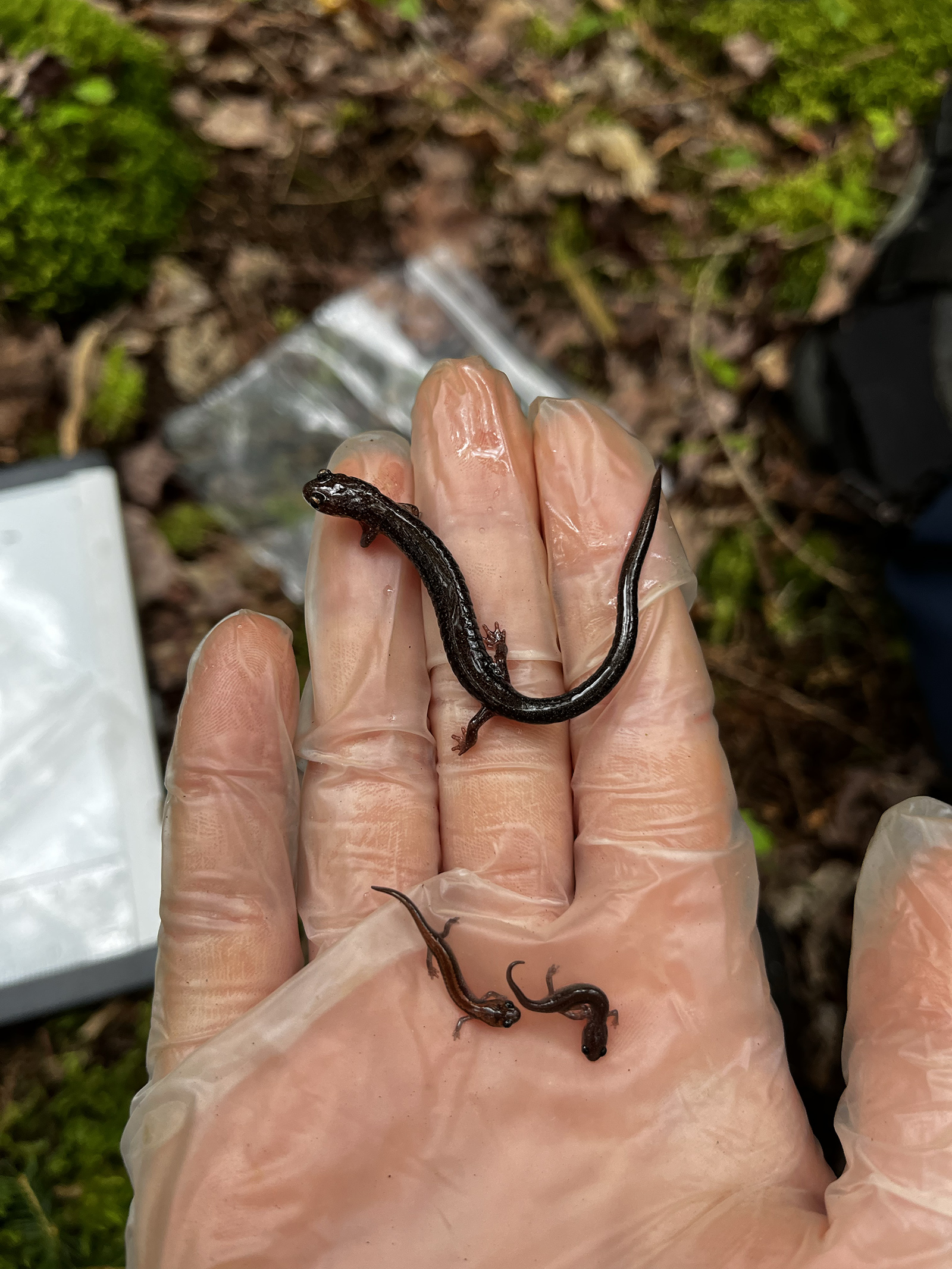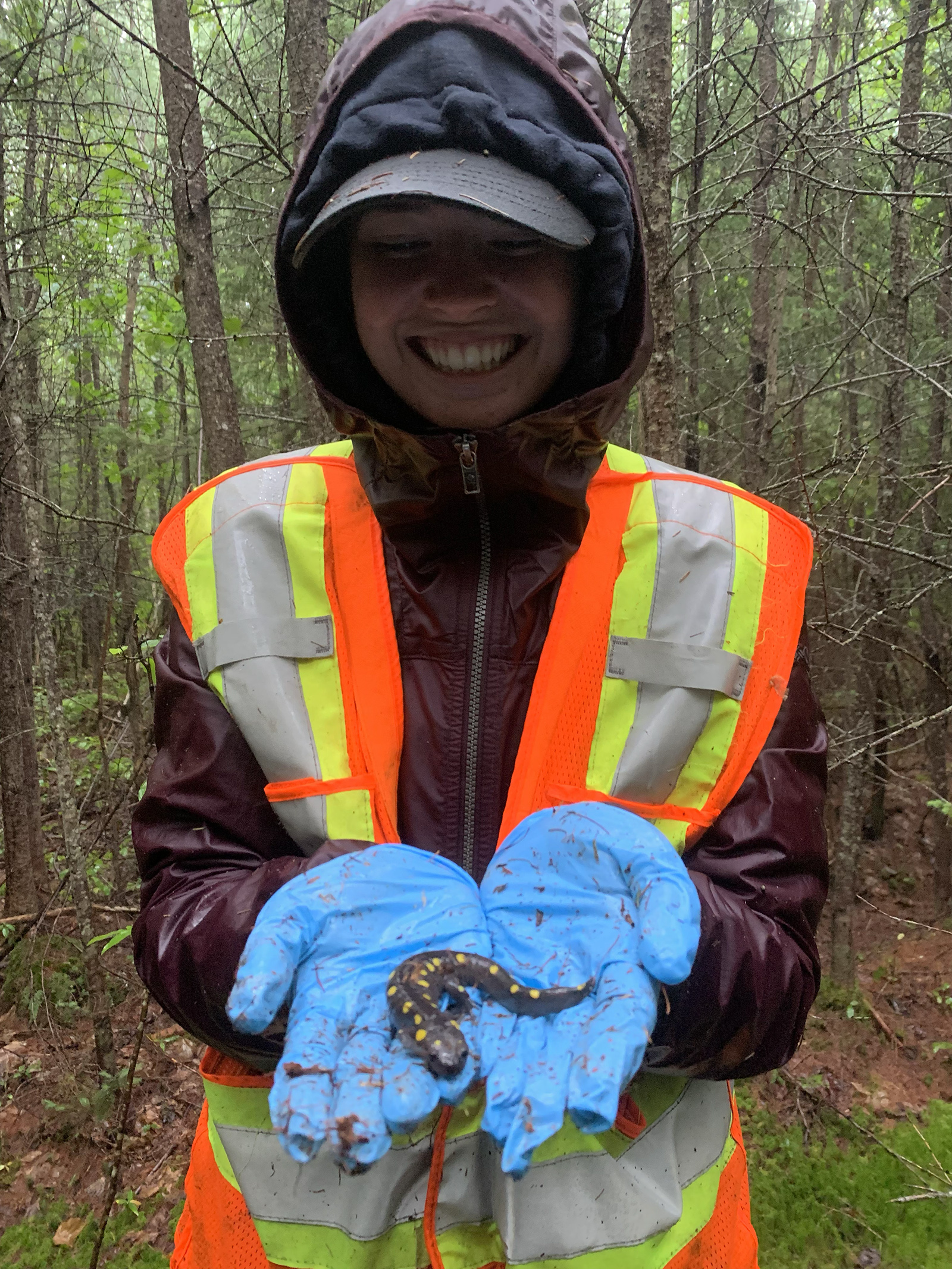Shining a light on the scaly and slimy
Snakes, salamanders, and lizards play important roles in ecosystems globally. One Mount Allison University researcher is now taking a closer look at the lives and behaviour of these under-studied animals and what this could tell us about their survival in an ever-changing environment.

One aspect of amphibian and reptile behaviour Dr. Julia Riley studies is their sociality, documenting social interactions, kinship, and family-living to learn more about how these animals communicate and socialize.
Riley joined Mount Allison University’s Department of Biology in 2021 and has continued a busy research program in the lab and in the field, in addition to teaching.
“We’ve observed that different species of reptiles and amphibians have specific social patterns, they have a home base, some have family units, and there’s even active parental care,” says Riley. “Observing and applying a scientific approach to look at these relationships helps us learn about how these animals are adapting to, and tolerating, the changing world - when faced with challenges such as climate change and urbanization.”
With a focus on behavioural and evolutionary ecology and conservation biology, Riley and her team integrate theories and techniques across these fields to design and carry out quantitative research for both novel and long-held questions in animal ecology. She was recently quoted in The New York Times in a piece about the social lives and behaviour of the world’s reptiles (Oct. 25, 2022)
“My lab’s research takes place in both the lab and field and involves several undergraduate and postgraduate researchers. I did my PhD in Australia and two postdocs in South Africa; a lot of my previous work has focused on these geographic regions,” says Riley. “We’ve since moved our focus to Atlantic Canada, studying snakes, like the Maritime Gartersnake, and salamanders, like the Eastern Red-backed Salamander. These populations, and how they adapt to changing environments, reflect the health of ecosystems and can assist in areas such as natural resource management.”
With this local focus, Riley has worked to bring more students into her research program, providing them with research experience in the field as part of their undergraduate education. This year, in her third-year class, Introduction to Herpetology (BIOL 3551), students set up cover boards on the Mount Allison farmland near campus to examine the habitat preferences and grouping behaviour of local snake and salamander species.
“The cover boards serve as shelter sites for snakes and salamanders. We can observe what their preferences might be (wood or metal), record grouping behaviour, and document local species presence, all within walking distance from the classroom,” says Riley.

Biology student Sara Leslie worked in Riley’s lab this past summer and is pursuing her Honours in the lab throughout this academic year. Leslie is researching how forest management practices like clear-cutting and herbicide application impact salamander populations as salamanders are bioindicators of forest health.
“My work allows me to apply the skills and knowledge I have learned in courses to my project and motivates me to continue studying the ecological world,” says Leslie.
In addition to Introduction to Herpetology, Riley also teaches courses in Behavourial Ecology (BIOL 4101) and Data Visualization and Communication (DATA 3001) for Mount Allison University’s interdisciplinary Data Science minor. In 2022, she was awarded a Discovery Grant from the Natural Sciences and Engineering Research Council (NSERC) for her project Linking Sociality, Ecology, and Population Biology of Amphibians and Reptiles.
Learn more about Riley’s research program at: https://www.rileyecology.com/
Banner photo caption: A Maritime Gartersnake (photo credit: Isaac Acker)




